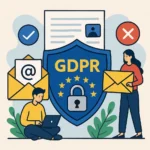Now Reading: How to Create a Successful Content Marketing Strategy That Drives Real Results
-
01
How to Create a Successful Content Marketing Strategy That Drives Real Results
How to Create a Successful Content Marketing Strategy That Drives Real Results

In today’s digital landscape, content isn’t just king—it’s the entire kingdom. Whether you’re a startup finding your footing or an established brand looking to maintain relevance, knowing how to create a successful content marketing strategy is essential for sustainable growth. The right strategy doesn’t just drive traffic; it builds authority, nurtures relationships, and ultimately converts prospects into loyal customers.
Key Takeaways
- Define clear, measurable goals aligned with business objectives before creating any content
- Research your target audience thoroughly to understand their needs, pain points, and content preferences
- Conduct comprehensive keyword research focusing on both short and long-tail keywords
- Create a content calendar that balances timely topics with evergreen content
- Prioritize quality over quantity, focusing on valuable content that addresses user intent
- Regularly measure performance against KPIs and adjust your strategy accordingly
- Incorporate various content formats including blogs, videos, and interactive elements
Define Your Content Marketing Goals
Before diving into content creation, you need to establish clear, specific goals. Without defined objectives, your content marketing efforts risk becoming directionless, making it impossible to measure success or justify your investment.
Set SMART Goals
Your content marketing goals should be Specific, Measurable, Achievable, Relevant, and Time-bound. Instead of vague aspirations like “increase website traffic,” aim for “increase organic traffic by 30% within six months.”
Common content marketing goals include:
- Increasing brand awareness
- Boosting organic traffic by 20% in six months
- Growing email subscribers by 15% this quarter
- Generating 25% more qualified leads
- Improving customer retention rates
- Establishing thought leadership in your industry
Each goal should directly support broader business objectives. For example, if your business aims to expand into a new market segment, your content marketing goal might focus on creating awareness and education content for that specific audience.
Establish Key Performance Indicators (KPIs)
Once you’ve set your goals, determine which metrics will indicate progress. Different goals require different KPIs:
- For brand awareness: Social shares, mentions, reach
- For traffic growth: Unique visitors, page views, time on site
- For lead generation: Form completions, downloads, email sign-ups
- For sales: Conversion rates, revenue attribution
- For customer loyalty: Repeat purchases, engagement rates
By establishing these metrics upfront, you create a framework for measuring success and making data-driven adjustments to your strategy.
Research Your Target Audience
The foundation of any successful content marketing strategy is a deep understanding of your audience. Without this knowledge, even the most polished content will fail to resonate.
Develop Comprehensive Buyer Personas
Create detailed profiles of your ideal customers, including:
- Demographics (age, location, income, education)
- Professional information (job title, industry, company size)
- Goals and challenges
- Content preferences (formats, platforms, topics)
- Purchase decision factors
Go beyond basic demographics to understand psychological factors like motivations, fears, and aspirations. Tools like Google Analytics, social media insights, and customer surveys can provide valuable data for building these personas.
Map the Customer Journey
Different content serves different purposes along the buyer’s journey. Map content needs across these stages:
- Awareness: Educational blog posts, infographics, and videos that address pain points
- Consideration: Case studies, comparison guides, and webinars that showcase solutions
- Decision: Product demos, customer testimonials, and free trials that facilitate conversion
- Retention: How-to guides, email newsletters, and exclusive content that builds loyalty
- Advocacy: Community forums, loyalty programs, and user-generated content opportunities
Understanding where prospects are in their journey allows you to create targeted content that moves them naturally toward conversion.
Useful Articles:
Conduct a Content Audit
Before creating new content, assess what you already have. A thorough content audit helps identify gaps, opportunities, and underperforming assets.
Evaluate Existing Content
Catalog all your content assets and evaluate them based on:
- Performance metrics (traffic, engagement, conversions)
- Relevance to current business goals
- Alignment with target keywords
- Quality and accuracy
- Format and presentation
Tools like Google Analytics, SEMrush, or Ahrefs can help analyze traffic patterns and engagement metrics.
Identify Content Gaps
Compare your existing content against:
- Your buyer personas and their needs at each journey stage
- Keyword opportunities you’re not targeting
- Topics your competitors cover that you don’t
- Emerging industry trends
- Questions your audience is asking
This analysis will reveal opportunities for new content creation and existing content optimization.
Develop a Keyword Strategy
Keyword research forms the backbone of an SEO-driven content marketing strategy, connecting your content to what your audience is actively searching for.
Focus on Intent-Based Keywords
Modern keyword research goes beyond search volume to understand the intent behind searches:
- Informational: “how to create a content marketing strategy”
- Navigational: “Backlinko content marketing guide”
- Commercial: “best content marketing tools”
- Transactional: “content marketing services pricing”
Align your content with the appropriate intent to meet users exactly where they are in their journey.
Balance Short and Long-Tail Keywords
While competitive short-tail keywords drive volume, long-tail keywords often convert better:
- Short-tail: “content marketing”
- Long-tail: “how to create a B2B content marketing strategy for SaaS”
Long-tail keywords typically have lower competition and higher specificity, making them valuable for targeted content. Use tools like Ahrefs, SEMrush, or even Google’s “People also ask” section to identify relevant long-tail opportunities.
Choose Your Content Types and Channels
Different content formats serve different purposes and appeal to different audience preferences. A diverse content mix maximizes reach and engagement.
Select Strategic Content Formats
Consider these popular content types and their strengths:
- Blog posts: Great for SEO, establishing authority, and addressing specific questions
- Videos: Excellent for demonstrations, storytelling, and complex explanations
- Infographics: Perfect for simplifying complex data and earning shares
- Case studies: Powerful for building credibility and showcasing results
- Webinars: Effective for lead generation and in-depth education
- Podcasts: Ideal for reaching audiences during commutes or multitasking
- Interactive content: Engaging for increasing time on site and gathering data
Your selection should reflect both your audience preferences and your resource capabilities.
Determine Distribution Channels
Identify where your audience spends their time online:
- Owned media: Your website, blog, email newsletter
- Earned media: PR, guest posts, organic social sharing
- Paid media: Social ads, PPC, sponsored content
- Social platforms: LinkedIn, Twitter, Instagram, TikTok, etc.
Each channel requires content optimized for its specific format and audience expectations. For example, LinkedIn content typically takes a more professional tone than TikTok content.
Useful Articles:
Create a Content Calendar
A strategic content calendar ensures consistent publication, balanced topics, and alignment with business initiatives.
Balance Content Types and Topics
Your calendar should include:
- Timely content tied to industry events, seasons, or trends
- Evergreen content that provides lasting value
- Content for different funnel stages
- Various formats to engage different learning styles
- Topics addressing each buyer persona
This balance ensures you’re meeting diverse audience needs while maintaining a steady content cadence.
Align With Business Initiatives
Coordinate your content calendar with:
- Product launches or updates
- Marketing campaigns
- Seasonal business fluctuations
- Industry events or conferences
This alignment ensures your content marketing supports broader business goals and capitalizes on periods of heightened interest.
Prioritize Quality Content Creation
In content marketing, quality consistently outperforms quantity. High-value content builds trust, earns shares, and drives conversions.
Focus on User Intent and Value
Every piece of content should:
- Directly address a specific user need or question
- Provide comprehensive, actionable information
- Offer unique insights or perspectives
- Be well-researched and factually accurate
- Include relevant examples or case studies
Content that thoroughly satisfies user intent performs better in search rankings and engagement metrics.
Optimize for SEO and Readability
Balance SEO best practices with user experience:
- Include target keywords in titles, headings, and naturally throughout the text
- Optimize meta descriptions and image alt text
- Use descriptive, keyword-rich URLs
- Structure content with clear headings and subheadings
- Include internal links to related content
- Break up text with bullet points, images, and white space
- Ensure mobile responsiveness
Remember that search engines increasingly prioritize content that delivers excellent user experiences.
Leverage Different Content Formats
Diversifying your content formats helps reach different audience segments and keeps your strategy fresh and engaging.
Blog Content Strategies
Blogs remain a cornerstone of content marketing, offering excellent SEO value and flexibility:
- Comprehensive guides: In-depth resources that thoroughly cover a topic
- List posts: Easily digestible, shareable content
- How-to articles: Practical, actionable content that solves specific problems
- Thought leadership pieces: Perspective-driven content that positions you as an authority
- Case studies: Real-world examples that demonstrate results
For maximum impact, each blog post should target specific keywords, include compelling visuals, and feature clear calls-to-action.
Visual and Interactive Content
Engagement rates typically increase with visual and interactive elements:
- Videos: Product demonstrations, tutorials, or thought leadership interviews
- Infographics: Visual representations of data or processes
- Interactive tools: Calculators, assessments, or configurators
- Webinars: Live or recorded educational sessions
- Podcasts: Audio content for on-the-go consumption
These formats often require more resources but can deliver higher engagement and conversion rates.
Useful Articles:
Implement a Promotion Strategy
Even the best content needs strategic promotion to reach its intended audience.
Multichannel Distribution
Promote each piece of content across multiple channels:
- Email marketing: Share with your subscriber list
- Social media: Adapt content for each platform’s format and audience
- Community engagement: Share in relevant online communities or forums
- Influencer outreach: Partner with industry influencers for wider reach
- Paid promotion: Boost high-performing content with targeted ads
Create a promotion checklist for each content piece to ensure consistent distribution.
Repurpose and Refresh Content
Maximize the value of your content through strategic repurposing:
- Turn blog posts into infographics or videos
- Extract key points for social media posts
- Compile related articles into comprehensive guides
- Update older content with new information or examples
- Repackage content for different platforms or formats
This approach extends content lifespan and reaches audiences who prefer different formats.
Measure and Optimize Performance
Regular performance analysis is essential for refining your strategy and demonstrating ROI.
Track Key Metrics
Monitor metrics aligned with your goals:
- Traffic metrics: Visitors, page views, traffic sources
- Engagement metrics: Time on page, bounce rate, pages per session
- Conversion metrics: Lead form submissions, email sign-ups, purchases
- SEO metrics: Rankings, organic traffic, backlinks
- Social metrics: Shares, comments, follower growth
Use tools like Google Analytics, Search Console, and platform-specific analytics to gather this data.
Implement A/B Testing
Continuously optimize through strategic testing:
- Headlines and meta descriptions
- Content formats and lengths
- Call-to-action placement and wording
- Visual elements and design
- Publishing times and frequencies
Even small improvements can significantly impact performance over time.
Build a Content Team and Workflow
Sustainable content marketing requires the right people and processes.
Assemble the Right Skills
A complete content team typically includes:
- Content strategist: Develops the overall approach and editorial calendar
- Content creators: Writers, designers, videographers, etc.
- SEO specialist: Ensures content is optimized for search
- Editor: Maintains quality and consistency
- Distribution specialist: Manages promotion and distribution
Depending on your resources, these might be dedicated roles, shared responsibilities, or outsourced functions.
Establish Efficient Workflows
Create clear processes for:
- Content ideation and approval
- Creation and review cycles
- Publication and promotion
- Performance tracking and reporting
- Content updates and optimization
Document these workflows to ensure consistency and enable scaling.
Creating a successful content marketing strategy requires careful planning, audience understanding, and consistent execution. By setting clear goals, researching your audience, developing quality content, and measuring performance, you can build a strategy that drives meaningful business results.
Start implementing these steps today to create a successful content marketing strategy that elevates your brand and connects with your audience.




















